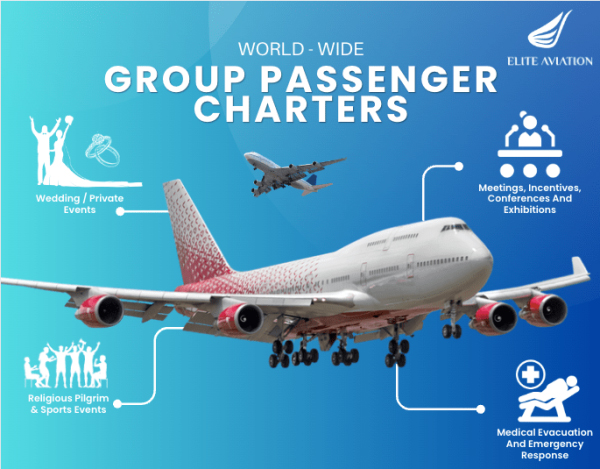[ad_1]
From rising tariffs and stricter regulations to the increasing complexity of global sourcing, pharmaceutical importers are navigating one of the most volatile trade environments in recent memory. In 2025, resilience has become a necessity. In response, importers must adopt strategic frameworks that blend regulatory readiness, supply chain agility, and predictive technologies.
As new disruptions unfold and trade relationships continue to shift, pharmaceutical companies that proactively adapt will gain a critical edge. The industry’s supply chain continues to feel the effects of trade policies that have reshaped sourcing economics. Recent tariff hikes on active pharmaceutical ingredients (APIs), medical devices and certain raw materials — particularly those sourced from China—are creating cost pressures and altering sourcing strategies.
The following strategies outline how industry leaders are future-proofing their import operations in the year ahead.
Planning for uncertainty. Rather than absorbing these costs or passing them to consumers, many importers are turning to dynamic scenario modeling and tariff forecasting. Teams are mapping multiple sourcing pathways and simulating their financial impact based on shifting duty rates. This proactive approach not only prepares organizations for worst-case scenarios but also guides more resilient contract negotiations with suppliers.
Shifting sourcing incentives. In some cases, the decision to relocate sourcing to a lower-tariff region is as much about maintaining regulatory compliance and shipping predictability as it is about cost savings.
Diversification and dual-sourcing. With the risk of over-reliance on a single supplier or region now front and center, importers are embracing diversification not just as a strategic advantage, but as a safeguard against disruption.
Building redundant supply networks. Pharmaceutical companies are actively developing secondary supplier relationships for critical components — particularly APIs and excipients. These dual-source models ensure that if one supplier becomes compromised by trade restrictions, quality issues or political instability, production can continue with minimal interruption.
In addition to redundancy, companies are evaluating suppliers based on geographic and regulatory diversity, favoring those located in jurisdictions with trade agreements that offer tariff stability and political alignment. For example, a company might pair an India-based API manufacturer with a lower-volume partner in Eastern Europe.
Nearshoring and friend-shoring. Alternative sourcing models are gaining traction. Nearshoring to countries within the same trade bloc or region, such as Mexico or Canada, offers faster transit times, reduced tariff exposure and more predictable compliance requirements.
Friend-shoring — sourcing from politically allied nations — adds another layer of long-term security. In both cases, the goal is to minimize geopolitical exposure while aligning supply chains with shifting global alliances and regulatory expectations.
While often more expensive upfront, these approaches offer greater control over transit time and regulatory alignment.
Deploying technology and predictive tools for risk management. For pharmaceutical importers in 2025, risk management begins not with reaction but with prediction. Digital tools are enabling companies to forecast potential threats, measure supplier stability and make faster, more informed decisions.
AI-driven supplier intelligence. Advanced analytics platforms are offering deep visibility into tier-1 and tier-2 supplier networks. These systems can flag early indicators of supplier distress — ranging from shipment delays and financial instability to regulatory enforcement actions — before they manifest as disruptions. Machine learning models are helping companies correlate multiple data points to assign risk scores to suppliers, contracts and shipping corridors.
This predictive capability transforms how procurement teams approach sourcing. Instead of waiting for failure, they can proactively adjust contracts, build alternative partnerships, or shift inventory allocation in response to emerging signals.
Scenario planning and stress testing. Sophisticated supply chain modeling tools allow organizations to simulate a wide range of disruptive events, from tariff hikes and port closures to pandemics and regulatory shifts. These simulations are now integrated into routine operations, helping firms quantify financial exposure, assess time to recovery, and identify weak links in their logistical networks.
What was once an annual exercise for crisis planning is now a monthly operational necessity.
Resilience planning now also considers cybersecurity vulnerabilities that could paralyze cross-border documentation or customs clearance systems.
Integrated compliance monitoring. Automated compliance platforms are providing continuous oversight of import documentation, U.S. Food and Drug Administration alerts and supplier approval status. These systems reduce administrative overhead, ensure readiness for inspections, and flag potential risks before they escalate into violations. They help importers track supplier compliance, analyze risk exposure, and maintain up-to-date records.
The ability to integrate compliance tracking directly into sourcing and logistics workflows minimizes disruption and helps organizations maintain both operational and regulatory continuity.
While diversification and technology provide structural support, regulatory compliance is the backbone that ensures pharmaceutical importers can operate without costly interruptions. In 2025, regulatory bodies around the world —particularly the FDA — are intensifying their scrutiny, placing more emphasis on documentation integrity, supplier verification, and real-time oversight of foreign supply chains.
The FDA’s approach to enforcement has evolved beyond periodic inspections to a model of continuous accountability. This includes increased reliance on automated flagging systems, real-time shipment tracking, and global data-sharing between regulatory authorities. Importers can no longer rely on post-shipment remediation to solve documentation gaps or lapses in supplier oversight. Instead, the burden is on proactive verification.
This shift has serious implications. A single undocumented ingredient or improperly verified supplier can trigger shipment detentions, Form 483 observations, or even import alerts. The cost is not only monetary — it includes supply delays, contract penalties and reputational damage.
Importers operating across multiple jurisdictions must also account for regulatory divergence. What satisfies FDA requirements might not meet the standards set by the EMA, MHRA, or Health Canada. For globally integrated firms, harmonizing compliance practices across markets is a critical, yet often overlooked, pillar of resilience.
Successful importers are rethinking how compliance is managed internally. Rather than isolating regulatory functions within legal or quality teams, organizations are embedding compliance touchpoints across procurement, logistics, and even R&D.
Cross-functional teams now collaborate on risk assessments before onboarding new suppliers. Real-time tracking tools are linked directly to quality assurance dashboards. Documentation workflows are automated and version-controlled. This integration makes it possible to meet evolving regulatory expectations while preserving operational agility.
This internal realignment also includes updated onboarding and auditing protocols for suppliers. Risk-based evaluations, deeper background checks, and more frequent virtual audits are helping importers maintain assurance while expanding into new sourcing regions.
Supplier auditing frameworks increasingly borrow best practices from other FDA-regulated sectors — for example, food-industry approaches that require PCQI training to ensure preventive controls are documented and verified — even if such training isn’t formally required for pharmaceutical GMP.
Compliance is increasingly viewed as a competitive differentiator. Companies that demonstrate audit readiness and traceability can secure preferred status with customers and regulators alike. They are more likely to move goods through Customs efficiently, renegotiate contracts with better terms, and weather regulatory changes without disruption.
Moreover, integrated compliance allows companies to scale with confidence. As pharmaceutical firms expand their sourcing networks or pursue new therapeutic categories, embedded compliance systems ensure that growth does not come at the expense of oversight. In this way, regulatory readiness becomes a resilience multiplier—amplifying the effectiveness of every other strategy in place.
Even the most diversified and digitally enabled importer can face unexpected disruption. That’s why pharmaceutical companies are revisiting traditional resilience levers such as inventory management and domestic production.
Strategic stockpiling. Once viewed as an inefficient use of working capital, stockpiling is now being reframed as a calculated hedge. By maintaining a safety buffer of high-risk ingredients and finished products, companies can absorb shocks related to transportation delays, regulatory inspections, or production slowdowns overseas.
Modern inventory strategies rely on real-time demand sensing, dynamic reorder thresholds, and supplier-integrated forecasting. This ensures that buffer stock is data-informed and not arbitrarily allocated.
Expanding domestic production footprints. These moves are not only a response to government incentives, but also a strategic play to reduce dependence on volatile international channels.
Investments in domestic capacity provide faster fulfillment cycles, stronger regulatory alignment, and improved response to recalls or demand spikes. While onshoring comes with higher upfront costs, the tradeoff in reduced risk exposure is becoming increasingly justifiable.
Balancing resilience with efficiency. Ultimately, companies must strike a balance between just-in-time efficiency and just-in-case preparedness. Those that successfully combine domestic production, smart inventory buffers and a global diversification strategy will be the ones best positioned to maintain service levels and protect patient access in 2025 and beyond.
As 2025 continues to test the limits of global trade systems, pharmaceutical importers are increasingly viewing resilience as a long-term operational priority and competitive imperative. From tariff planning to supplier diversification, from predictive analytics to compliance automation, resilient organizations are integrating these strategies across every layer of their operations.
Rather than chasing certainty in an unpredictable world, leading importers are building systems designed to adapt, absorb, and respond. Resilience is not about avoiding disruption altogether, but about navigating through it without compromising compliance, cost control, or patient access.
Looking ahead, the most successful importers will treat resilience as a measurable business discipline. Adaptability will define market leaders as they navigate rising volatility — and those who embrace this mindset early will shape the standards for global pharmaceutical trade. It’s a competitive strategy for growth.
As AI matures and global regulations tighten, the next frontier of resilience may be real-time supply chain governance driven by predictive analytics.
Melissa Sayers is head of the Drug Team at Registrar Corp.
[ad_2]
Source link



